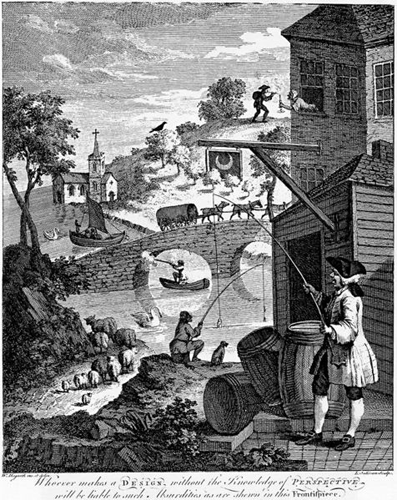|
15. WILLIAM HOGARTH AND PERSPECTIVE Artists and painters struggled for centuries to realistically represent three-dimensional scenes on a two-dimensional wall or canvas. The solution came with an understanding of perspective. Light rays from a scene form a cone (projection) to the eye through an imaginary screen or window. The set of points where the rays meet the screen constitute a picture or section, the appearance of which is determined by the laws of perspective. For example, parallel lines inclined to the picture plane must meet at a certain vanishing point. ‘Projection’ and ‘section’ form part of a branch of mathematics called projective geometry. In 1753, artist William Hogarth produced this Satire on False Perspective, in which he deliberately breaks the rules of perspective. See how many errors you can find.
|
